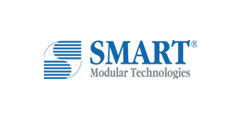Moving Health Forward with SD Cards

Modern healthcare is unimaginable without data. From medical imaging
to clinical notes, laboratory tests, and monitoring equipment, the
second we step into a healthcare facility, data is an essential part of
the diagnosis medical professionals give us. With the surge of telemedicine applications, medical data is also increasingly collected and stored outside the traditional healthcare environment. The World Economic Forum estimates that hospitals generate 50 petabytes of data annually. In comparison, the Library of Congress houses about 20 petabytes of data. According to RBC Capital Markets, healthcare generates about 30% of the world’s data.

This mountain of data, at 137 terabytes per day, keeps growing too: The American Hospital Association (AHA) reported that healthcare data increases by 6 to 7% per year. Advancements in medical imaging only accelerate this trend. An X-ray of the chest may be 15 megabytes. A 3D mammogram is easily 300 megabytes. A digital pathology file of the same area quickly reaches 3 gigabytes. All that data needs to be stored in a reliable, safe, and efficient way.
Optimal patient care
Storage capacity is definitely a challenge with the growing amount of medical data. However, with the available memory components today that go beyond a terabyte of data storage, the amount of data and the duration of storage is not the only issue. Generating or collecting medical data is only one part of the equation. How to store, secure, and analyze that data is where the true value lies. In order to provide optimal and efficient care to the patient, sharing the generated data with other healthcare entities has become a necessity as well. Inefficient implementation can result in duplication of tests and delays in patient care. These requirements affect the type of memory components that can be used from data capture through long-term storage of patient data.
SD Card and microSD cards for mobile healthcare
SD and microSD memory cards are the first choice for mobile healthcare applications used in the field, at home, and in hospitals. They are small and portable making them perfect for applications in close contact with the patient’s body, including wearable medical devices like wrist-worn monitors, tele-rehabilitation applications, or sleep monitors. Since most mobile health systems record data over a long period of time for analysis, consistent and swift loading and recording speed is a critical characteristic of every component in the setup. SD/microSD cards offer fast and reliable read and write speeds in a compact, lightweight format. They have low power requirements and offer easy integration and replacement without the need for much technical knowledge. During diagnosis or consultation, the patient-generated data on the SD/microSD cards can be transferred quickly for analysis. Cleaning and sanitizing SD or microSD cards is also straightforward, which is important in very hygienic hospital environments.
Data is the future of healthcare.
Data is prone to play a central role in improving clinical and economic decision-making in healthcare facilities. Similar to other industries, healthcare understands the value of the data it accumulates. The industry defaults to saving and keeping all patient data, even though to what extent and in what way it will be used in the future is not crystal clear today. This means that the data storage strategy at healthcare organizations is likely to evolve over time. From data generation to data sharing and long-term storage, it is important to select the right storage and memory components for the different applications at each stage now and in the future.
- +1 Like
- Add to Favorites
Recommend
- A Tutorial Guide on Selecting the Right SD Card: SD Card Symbols, Classes, and Compatibility Deciphered
- The Difference between SIM Card and SD Card
- SMART‘s DuraFlash, High-capacity, RD230 SD Cards are Fully SD UHS-I Compliant
- SD Performance Standards
- Embedded MultiMediaCards (eMMCs) vs. Secure Digital (SD) Cards
- SMART‘s DuraFlash, High-capacity, RD230m MicroSD Cards are Fully UHS-I Compliant
- More Compact, Low-cost Type Standard Specification SD Card Connector CIM-K03N/CIM-K03NS/CIM-K10R/CIM-K09RS
- SMART Modular Technologies to Present at SNIA Persistent Memory + Computational Storage Summit
This document is provided by Sekorm Platform for VIP exclusive service. The copyright is owned by Sekorm. Without authorization, any medias, websites or individual are not allowed to reprint. When authorizing the reprint, the link of www.sekorm.com must be indicated.






























































































































































































































































































































































































































































































































































































































































































































































































































































































